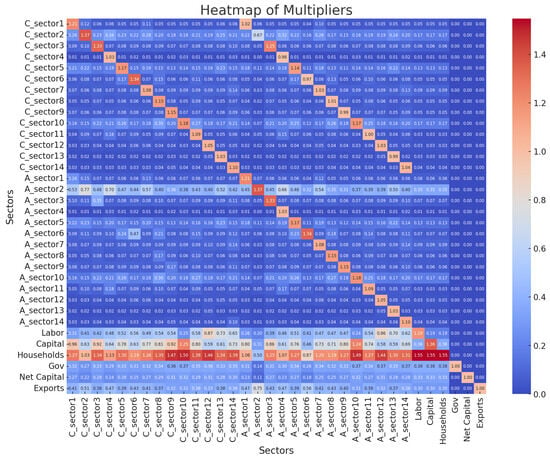- Article
From Data to Decisions: Leveraging the Social Accounting Matrix and Multiplier Analysis to Guide Equitable Policy Decision in Greece
- Afentoula Mavrodi,
- Georgios Kolias and
- Christos Gogos
- + 1 author
This study develops an updated national Social Accounting Matrix (SAM) for Greece, based on the 2020 Input–Output Table that captures post-crisis structural and macroeconomic transformations, implemented in Python 3, hence producing a reusable, modular code. This methodological approach facilitates multiplier-based policy analysis of how shocks propagate through the Greek economy, and therefore, this study contributes to the literature by addressing the gap in multiplier analysis for this setting. Output, value-added, and income multipliers were estimated using the Moore–Penrose pseudo-inverse via Singular Value Decomposition (SVD). Findings highlighted the substantial role of government transfers in supporting household and firm incomes, largely due to COVID-19 relief measures. This analysis showed that production expansion in energy, construction, and wholesale and retail trade can stimulate broad economic activity, while service-related sectors play a critical role in income generation and equity considerations. At the same time, firms in trade, hospitality, and real estate were heavily affected by the pandemic shock. The findings of this study provide a benchmark for understanding Greece’s economic structure at a critical moment in time (the COVID-19 pandemic).
4 December 2025


